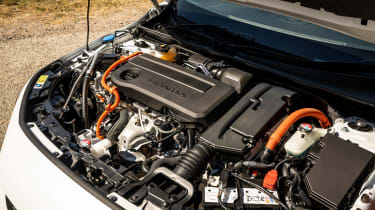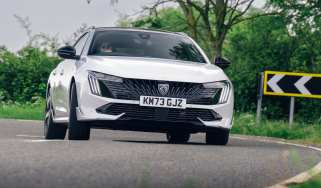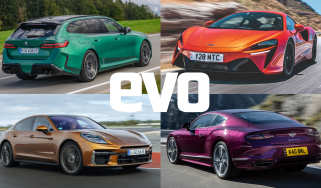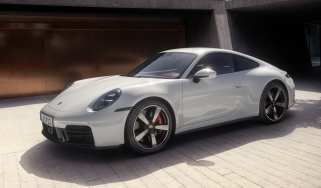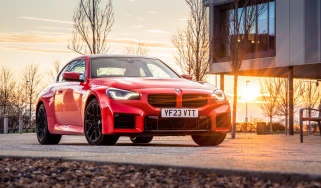Hybrid car technology explained – mild-hybrid, 'self-charging' and PHEV
Today's hybrid cars fall under three main categories – mild-hybrid, 'self-charging' and plug-in hybrid. We explain the technology behind each

It wasn’t so long ago that high-performance hybrids were restricted to the realm of seven-figure hypercars, but today the correlation between hybrid and performance cars is a more widely accepted notion.
Hybridisation is now found in everything from hot hatchbacks and performance saloons to sports coupes and supercars. This is largely due to ever tightening legislation, and is a method to ensure manufacturers aren’t financially penalised for producing these sorts of high-performance, high-profit models.
When used to add performance to a combustion powertrain, electrification does have other traits. It can be used to flatten torque curves, provide an extra kick when taking off and spin up large turbochargers before the exhaust gases have reached it.
The compromise, however, is added weight. Batteries, motors and all the associated hybrid car gubbins are heavy. For example, the plug-in hybrid Mk8 VW Golf GTE weighs a full 170kg more than its petrol GTI cousin, and that additional heft blunts performance and handling despite the two having broadly similar power outputs. Then there’s the issue of calibration – with two propulsion systems and two braking systems, the complex interactions between a hybrid car’s powertrain components is proving to be more problematic the more we drive them.
Yet despite their complexity, manufacturers have been making exceptional strides in the execution and implementation of their hybrid systems, diversifying out from the three basic categories they at one time adhered to into a plethora of different forms, each with their own distinct characteristics.
Hybrid car technology explained
The term 'hybrid' is a relatively loose one as there are a few different ways of adding electrical assistance to a car with an internal combustion engine. We describe the key hybrid car technologies below…
Mild Hybrid – MHEV
Mild hybrids have become the most common in the new car market due largely to their now ubiquitous application in most combustion-engined cars. Everything from a basic Ford Focus through to the Audi RS6 now include a mild-hybrid system of some type that subtly assists the main combustion powertrain.
The most common reason to utilise a mild-hybrid system is to streamline a combustion engine’s operations, consolidating a standard IC’s ancillary components like the starter motor and alternator into one small electric motor. In a majority of cases this electric motor is powered by a small lithium-ion battery that functions on a separate electrical system, driven either from regenerative braking or straight from the crank. This helps improve an engine’s efficiency, reducing parasitic losses.
This technology can be expanded upon to increase performance, too, with many manufacturers leveraging the secondary and more powerful electrical system for different uses. In some cases, like that seen in the latest Mercedes-AMG SL43, AMG has fitted a tiny electric motor right into the turbocharger housing, giving it the ability to spin the compressor wheel until the exhaust gases take over. Other applications, such as Merc’s ‘53’ models and high-powered diesel Audis like the S6 and previous-gen SQ7 use the mild-hybrid system to power a miniature supercharger, again filling in the torque gap until the exhaust gases have reached the turbochargers.
In other cases, like the one used in M Performance BMWs such as the M340i, a small electric motor is integrated into the transmission, directly adding torque to the powertrain for short bursts. An extreme example of this type of mild-hybrid system can be found in the Lamborghini Sian and Countach, where the electric motor is powered by a supercapacitor, rather than battery, to help torque-fill when at low rpm or during gear changes. Modern Formula 1 cars also use a version of this type of mild-hybrid system alongside their turbocharged 1.6-litre V6 power units. F1 cars feature two main electric powertrain elements: MGU-K and MGU-H, each drawing energy not from a plug, but kinetic and heat sources respectively.
Parallel and generator hybrids – ‘Self-charging’ and plug-free hybrids
The parallel-hybrid system was pioneered by Toyota with its original Prius and has since become the backbone of its entire global range, vastly reducing its CO2 outputs without the need for large battery packs. The system is similar to a mild-hybrid, but the electric motor and battery pack are powerful enough to momentarily drive the car independently.
Both petrol and electric power sources can work either separately or in tandem depending on what the car’s internal brain thinks is most efficient. When under hard acceleration or high speeds, both power sources work together to provide all the available power, which in the case of Toyotas is often sent to the wheels via a CVT transmission. With every generation Toyota has continued to increase the impact of the electric motor, but the petrol engine still generally remains the dominant powertrain element.
Honda has taken a different approach to its mainstream hybrid system. In its latest generation of models, including the Civic, it’s introduced a hybrid generator system (or e:Hev in Honda speak) that also does without a large battery pack or reliance on a plug-in point. The system works by essentially swapping the Toyota’s system around and driving the front wheels predominantly with the electric motor. When the small battery pack is out of juice, a small petrol motor will then wake up and run at its most efficient engine speed to create extra current to send through the batteries and on to the wheels.
The impressive element of this powertrain style isn’t just its efficiency, but the variability that Honda’s been able to integrate into the driver modes, making the system feel like two or even three completely different types of hybrid powertrains in one. During normal driving, it feels just like an EV, only with a petrol engine running independently of the wheels in the background. Switch to Sports mode and the electric motors will augment the torque output to coincide with steering wheel paddles that control a virtual gearbox.
The petrol engine revs are also matched to this drive mode, making it feel just like a normal, albeit very responsive petrol-engined car with an automatic transmission. Finally, at motorway speeds the petrol engine is able to take over from the electric motor entirely and drive the front wheels mechanically through a single-speed transmission, taking over from the e-motor when it’s at its least efficient.
Honda has yet to explore any high-performance applications for this clever hybrid arrangement, but reaffirms the brand’s commitment to out-of-the-box thinking.
Plug-in hybrid – PHEV
Plug-in hybrids have more of an all-you-can-eat mentality to the amount of hardware packed into their powertrains, which has its own benefits and compromises. All plug-in hybrids are designed to be able to run for an extended period of time on electric power alone, which means bigger and beefier electric motors, plus a much larger battery pack to feed them. There has been huge diversification in plug-in hybrid development over the last few years leaning broadly toward either an efficiency or performance bias.
In some layouts, like that found in the BMW 330e, the electric motor is placed inside the transmission, with the electric drive driven through the same propshaft and rear differential as standard combustion models.
Some more complex systems, such as that found in the now-defunct Peugeot 508 PSE, utilise multiple electric motors as well as the combustion engine. In this case, the rear-mounted electric motor drives the rear axle independently, with both the usual transversely mounted combustion engine and a smaller electric motor powering the front.
Mercedes-AMG has introduced a new performance-biased arrangement with its C63 S E Performance, with power from the front-mounted combustion engine being sent to the rear wheels, where drive is joined by a 201bhp electric motor via its own two-speed transmission. Things get even more complicated when slip on the rear axle is detected, as power from both electric and combustion powertrains is then sent back up to the front wheels.
This is combined with the use of an electrically driven turbocharger on the four-cylinder petrol engine up front that is run from a high-powered 48V system, essentially using both a mild and plug-in hybrid system. The car can be run using just the electric motors, but only for a limited period as the batteries have been designed for maximum discharge speed rather than outright electric range. Brake feel is another element that’s often tricky to calibrate in hybrids, and particularly in performance hybrids, as there’s yet more contrast in feel and response between high-powered friction braking and the regeneration capability of electric motors.
> Mercedes-AMG C63 S E Performance review
If this sounds complicated, it’s because it is, and that complexity comes with the cost of both excess weight and the difficult task of calibrating it all to feel natural and consistent. This is something the new C63 S E Performance is guilty of, as our initial drive revealed a level of incongruence between powertrain elements. BMW M has also embraced plug-in hybrid tech with the XM SUV and G90 M5, while rumour has it Audi Sport won’t be far behind with the next RS4 and RS6 also going PHEV.


